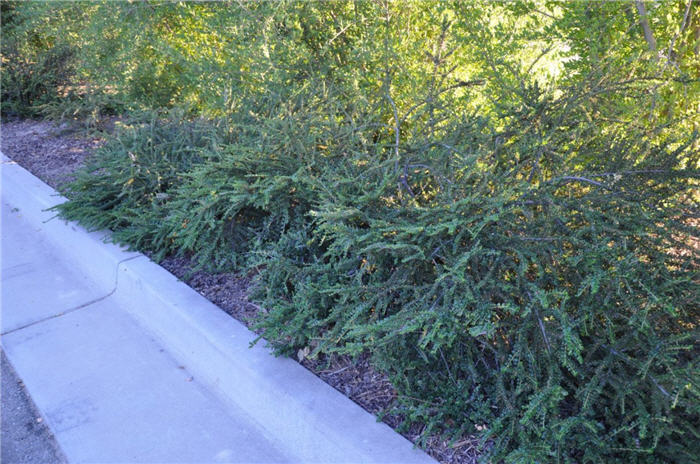| Botanical Name: Cotoneaster apiculatus | |
| Common Name: Cranberry Cotoneaster |

-
Anatomy
-
Culture
-
Design
Plant Type
Shrub, Ground cover
Height Range
1-3'
Flower Color
Pink, White
Flower Season
Spring
Leaf Color
Dark Green
Bark Color
Brown
Fruit Color
Red
Fruit Season
Winter, Fall
Sun
Full, Half
Water
Low, Medium
Growth Rate
Moderate
Soil Type
Sandy, Clay, Loam, Rocky, Unparticular
Soil Condition
Average, Rich, Poor, Well-drained, Dry
Soil pH
Acid, Neutral, Basic
Adverse Factors
n/a
Design Styles
Formal, Mediterranean, Ranch, Spanish
Accenting Features
Espalier, Fall Color, Standard
Seasonal Interest
Summer, Fall
Location Uses
Shrub Border, Foundation, Parking Lot, Walls / Fences, With Rocks
Special Uses
Erosion Control, Filler, Hedge, Mass Planting
Attracts Wildlife
n/a
Information by: Stephanie Duer
Photographer:
Photographer:
-
Description
-
Notes
An attractive low shrub characterized by spreading branches that display and interesting crossed or herringbone pattern. Leaves are small, rounded, and dark green. Small, white early summer flowers are followed by large, bright red berries that persist into winter. Versatile shrub that can be used to cover large areas. Effective on banks or slopes for erosion control. Foundation plant. Low informal hedge. Deciduous. A moderate grower to 3 feet tall and 6 feet wide.
Grow in any well-drained soil in full to part sun. Wide range of soil tolerance, and pH tolerant. Branches root where they touch the ground. Tolerates air pollution and rabbits (that would be an interesting parking lot...). Cotoneaster get very woody if sheared, so prune selectively to control size and shape; see Guides.